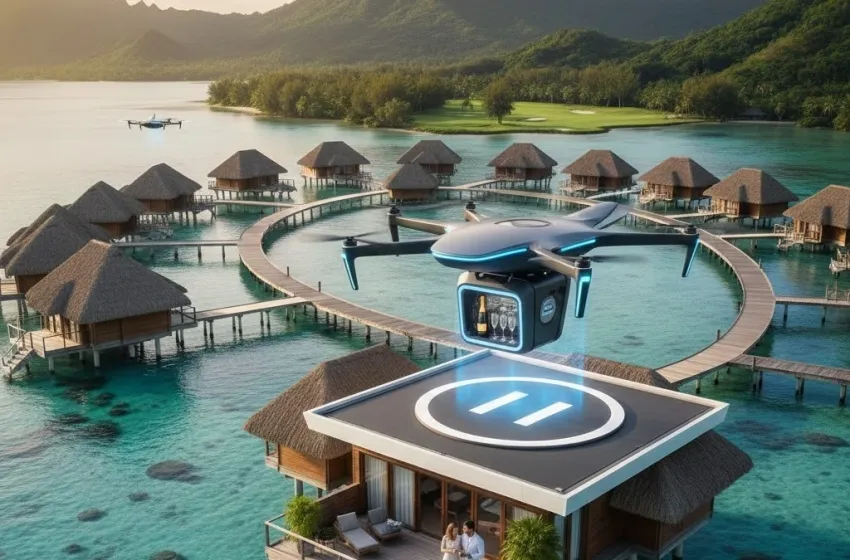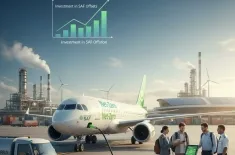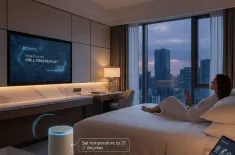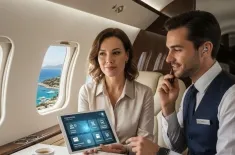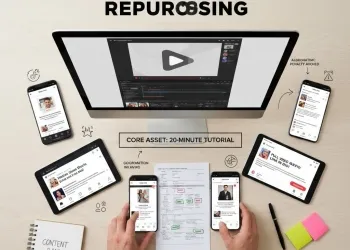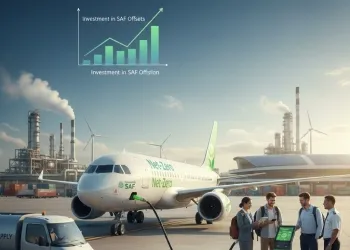Achieve immediate amenity fulfillment, overcome remote location logistics, and offer high-end convenience.
The hospitality industry, particularly the high-end resort sector, is constantly seeking the next frontier in luxury and convenience. As guests increasingly demand instant gratification and personalized experiences, traditional logistics within vast, sprawling resort complexes are proving inefficient and disruptive. The answer is taking to the skies: autonomous delivery drones. The integration of a drone delivery service is not merely a futuristic gimmick; it represents a fundamental shift in resort automation, promising unparalleled speed, efficiency, and an elevated guest experience.
This detailed exploration delves into how using autonomous drones for the rapid delivery of small items (food, towels, amenities) within large, sprawling resort complexes is redefining the parameters of luxury service, especially for those located in challenging or remote location logistics.
Redefining Guest Experience with Immediate Amenity Fulfillment
The hallmark of a truly luxurious resort stay is the elimination of friction and waiting time. A guest should not have to wait 30 minutes for a fresh set of pool towels or an ice bucket when their villa is a five-minute drive or a long walk from the main service hub. This is where the concept of immediate amenity fulfillment transforms the guest journey.
Autonomous delivery drones, typically small, electric Vertical Take-Off and Landing (VTOL) aircraft, are perfectly suited for this role. They bypass crowded pathways, internal service roads, and the general complexity of ground-based transport on large properties.
The Drone Delivery Ecosystem in Resorts
A modern resort drone delivery system operates through a seamless, automated process:
- Order Placement: A guest places an order via a dedicated in-room tablet, resort app, or even a voice assistant for items like a forgotten toothbrush, a bottle of wine, a sunscreen re-up, or a small food order.
- Fulfillment & Loading: The request is instantly routed to a central or localized drone hub. Resort staff load the item—often up to a 5-10kg payload—into a specialized, secure, and temperature-controlled compartment on the drone.
- Autonomous Flight: The drone launches, following a pre-optimized, GPS-guided flight path that avoids restricted airspace and sensitive guest areas. Its rapid, direct flight significantly cuts the delivery time from what might be 20 minutes by golf cart to often under 5 minutes.
- Pinpoint Delivery: The drone arrives at a designated, discreet landing pad—which could be a small platform outside a villa, a poolside station, or a specific roof-top area. The package is gently lowered via a tether or dropped into a secured locker, maintaining contactless delivery.
- Guest Notification: The guest receives an alert (e.g., on their phone or tablet) that their amenity has arrived, completing the immediate amenity fulfillment cycle.
This efficiency moves the perceived service from "We'll get that to you as soon as possible" to "Your item is already there," which is the essence of high-end convenience.
Resort Automation: Beyond Front-of-House
The adoption of drone delivery service is a core component of overall resort automation, providing benefits that extend far beyond simply delighting the guest.
Optimizing Internal Logistics and Staff Efficiency
Large resort properties, especially those encompassing multiple islands, vast golf courses, ski slopes, or expansive beachfronts, struggle with last-mile internal logistics. Human staff spend considerable time navigating these distances for small, high-frequency requests.
- Labor Reallocation: By automating the transport of small goods, resort management can reallocate valuable human capital from running routine errands to performing high-touch, personalized guest service, such as concierge duties, in-person dining service, or personalized tour guiding. This increases job satisfaction for staff and enhances the perceived value of human interaction for guests.
- Speed and Reliability: Unlike vehicles affected by road congestion, weather delays on the ground, or shift changes, drones operate autonomously on a 24/7 basis, ensuring a consistent and reliable delivery metric. The predictability of drone delivery times becomes a key operational advantage.
- Inventory Management: The system integrates with the resort's inventory management software, allowing for real-time tracking of amenity usage and automated re-ordering. This data-driven approach minimizes waste and ensures stock availability, particularly crucial for popular items during peak season.
Addressing Remote Location Logistics
Many of the world's most luxurious resorts are intentionally situated in exotic or challenging locales. Think of over-water bungalows on a private atoll, secluded villas tucked away in mountain foothills, or expansive properties that span multiple natural landscapes. These settings, while beautiful, create significant remote location logistics challenges.
For resorts facing these geographical hurdles, drones become essential infrastructure:
| Geographical Challenge | Traditional Logistics Method | Drone Logistics Solution |
|---|---|---|
| Over-Water Bungalows | Boats, long jetties, walking staff | Direct, rapid air path delivery to dedicated bungalow landing platforms. |
| Mountain/Hillside Villas | Steep, winding service roads, small vehicles | Direct-line-of-sight flight path over challenging terrain. |
| Golf Courses/Beaches | Drink carts, staff on bikes | Instant delivery to pre-set points (e.g., the 9th hole, a specific beach chair zone). |
This capability transforms a logistical bottleneck into a signature selling point—guaranteeing rapid service despite the seclusion.
High-End Convenience: The Luxury Differentiator
In the ultra-competitive luxury hospitality market, high-end convenience is the new currency. Guests paying a premium for their stay expect services that are not just fast, but also seamless, discreet, and technologically sophisticated. Drone delivery offers this distinction.
Discretion and Privacy
One of the often-overlooked benefits in a luxury context is the added layer of privacy. Ground-based delivery requires staff to drive past or walk near private villas and guest areas. A drone, flying overhead and delivering to a discreet drop-off point, minimizes human intrusion. This is especially valued by high-profile clientele who prioritize solitude and an uninterrupted experience.
Enhanced Safety and Security
Autonomous drones are equipped with sophisticated sensor packages, including Lidar and visual cameras, that allow them to detect and avoid both static obstacles and other air traffic. This safety redundancy is far superior to a human-operated vehicle navigating complex service paths at night.
Furthermore, the integrity of the delivery is guaranteed:
- Security: Items are sealed and often require a one-time digital code or biometric scan from the guest to be retrieved from the drop-off station, virtually eliminating package pilferage.
- Temperature Control: For high-value items like gourmet meals, chilled champagne, or delicate amenities, specialized drone pods maintain optimal temperature and ensure the product arrives in perfect condition—a crucial element of high-end convenience.
Challenges and The Path to Adoption
While the potential for drone delivery service is immense, successful implementation requires overcoming several hurdles, primarily regulatory and infrastructural:
- Airspace Regulation: Flying drones "Beyond Visual Line of Sight" (BVLOS), which is necessary for large resorts, requires specific regulatory approval from national aviation authorities. Resorts must work closely with regulators to establish safe, segregated drone corridors.
- Noise and Guest Perception: The sound signature of a drone can detract from a serene resort atmosphere. Manufacturers are investing heavily in 'whisper-quiet' propeller technology to ensure the delivery process remains discreet.
- Infrastructure Investment: Implementing a drone delivery service requires a substantial initial investment in the drone fleet, centralized charging and maintenance hubs, and the deployment of specialized, user-friendly landing platforms across the property. This investment, however, is increasingly justified by the long-term savings in labor and the revenue generation from premium service offerings.
Despite these challenges, early adopters—such as those operating on remote island chains or expansive, multi-zone properties—are demonstrating the technology's viability. The integration of this technology is positioning these resorts not only as luxury providers but also as innovators, reinforcing their brand promise of offering the utmost in high-end convenience.
The drone is not just a delivery vehicle; it is a flying concierge, an instant problem-solver, and the definitive symbol of next-generation resort automation. It ensures that no matter how remote the location, the delivery of comfort, speed, and seamless service is never more than a few minutes away, securing the resort's status at the pinnacle of modern luxury.
